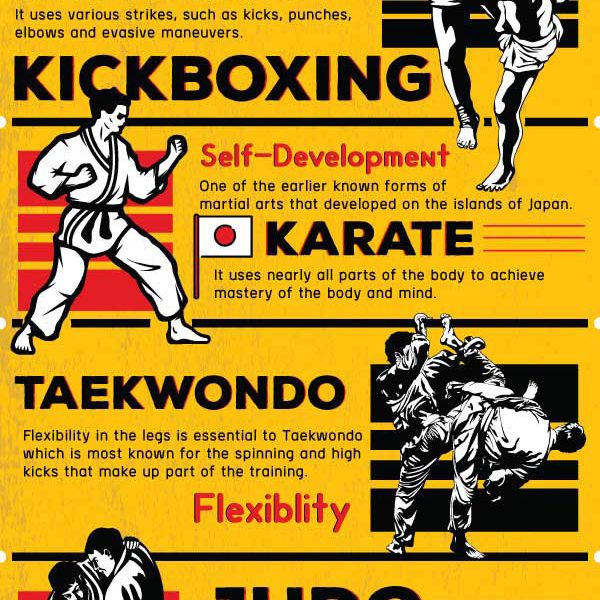Untangling The Secret Of Numerous Fighting Style Self-Controls: An Overview To Karate, Taekwondo, And More
Untangling The Secret Of Numerous Fighting Style Self-Controls: An Overview To Karate, Taekwondo, And More
Blog Article
Content Author-Childers Haastrup
Are you tired of feeling overwhelmed by the huge world of fighting styles? With so many designs to choose from, it can be simple to get shed in a sea of strikes, kicks, and mysterious names. But concern not!
This discussion will certainly demystify the different martial arts designs, taking you on a trip from the powerful strikes of Martial arts to the vibrant kicks of Taekwondo. Prepare yourself to uncover the beginnings, strategies, and philosophies behind these old art kinds.
So, tighten your belt and prepare to embark on an enlightening exploration right into the captivating globe of fighting styles.
Origins of Martial Arts Styles
The origins of fighting styles styles can be mapped back to old worlds and their need for self-defense and combat strategies. Throughout background, various cultures created their own special methods of battling, each with its own collection of strategies and philosophies.
In China, for example, fighting styles styles such as Martial art and Tai Chi were developed as a means of self-defense and improving physical and mental wellness.
In Japan, the samurai warriors developed designs like Karate and Judo, concentrating on self-control, precision, and proficiency of the body.
Likewise, in Korea, Taekwondo emerged as a fighting style emphasizing high kicks, fast activities, and mental stamina.
These very early human beings laid the structure for the varied array of fighting styles styles that exist today, each with its very own rich background and cultural value.
Techniques and Training Techniques
To understand fighting styles styles, experts need to discover various methods and training methods.
Techniques are the details activities and activities utilized in battle, such as strikes, kicks, tosses, and obstructs. Various martial arts styles have their own distinct collection of techniques that professionals need to grasp through strenuous training.
Educating approaches vary depending on the style, yet they typically involve a combination of physical conditioning, drills, competing, and types.
Physical fitness is vital to construct strength, adaptability, and endurance. Drills aid specialists refine their strategies and enhance their rate and precision.
Competing allows visit the next internet site to practice their strategies in a controlled, sensible atmosphere. Types, additionally known as kata, are prearranged sequences of activities that aid experts establish muscular tissue memory and focus.
Viewpoints and Principles
Discovering the philosophies and principles of fighting styles styles can supply you with a much deeper understanding of your picked discipline. Each martial art has its very own one-of-a-kind ideology and set of assisting concepts that form the way it's practiced.
For example, Karate stresses discipline, respect, and self-constraint. It educates practitioners to focus their minds and bodies, enabling them to defend themselves while keeping a sense of inner peace.
On the other hand, Taekwondo puts a strong focus on speed, agility, and adaptability. Its concepts are rooted in the tenets of politeness, integrity, determination, self-control, and indomitable spirit.
Verdict
Since you've discovered the beginnings, techniques, and ideologies of different fighting styles styles, you have a deeper understanding of these ancient techniques.
Visualize https://martialartsnearmeforkids65431.ambien-blog.com/39637317/gaining-knowledge-regarding-the-different-strategies-to-martial-arts-educating , experimenting unwavering determination and focus, appearing boards with an effective punch.
you can try this out and toughness called for to master a martial art, reminding us that with technique and determination, anything is possible.
